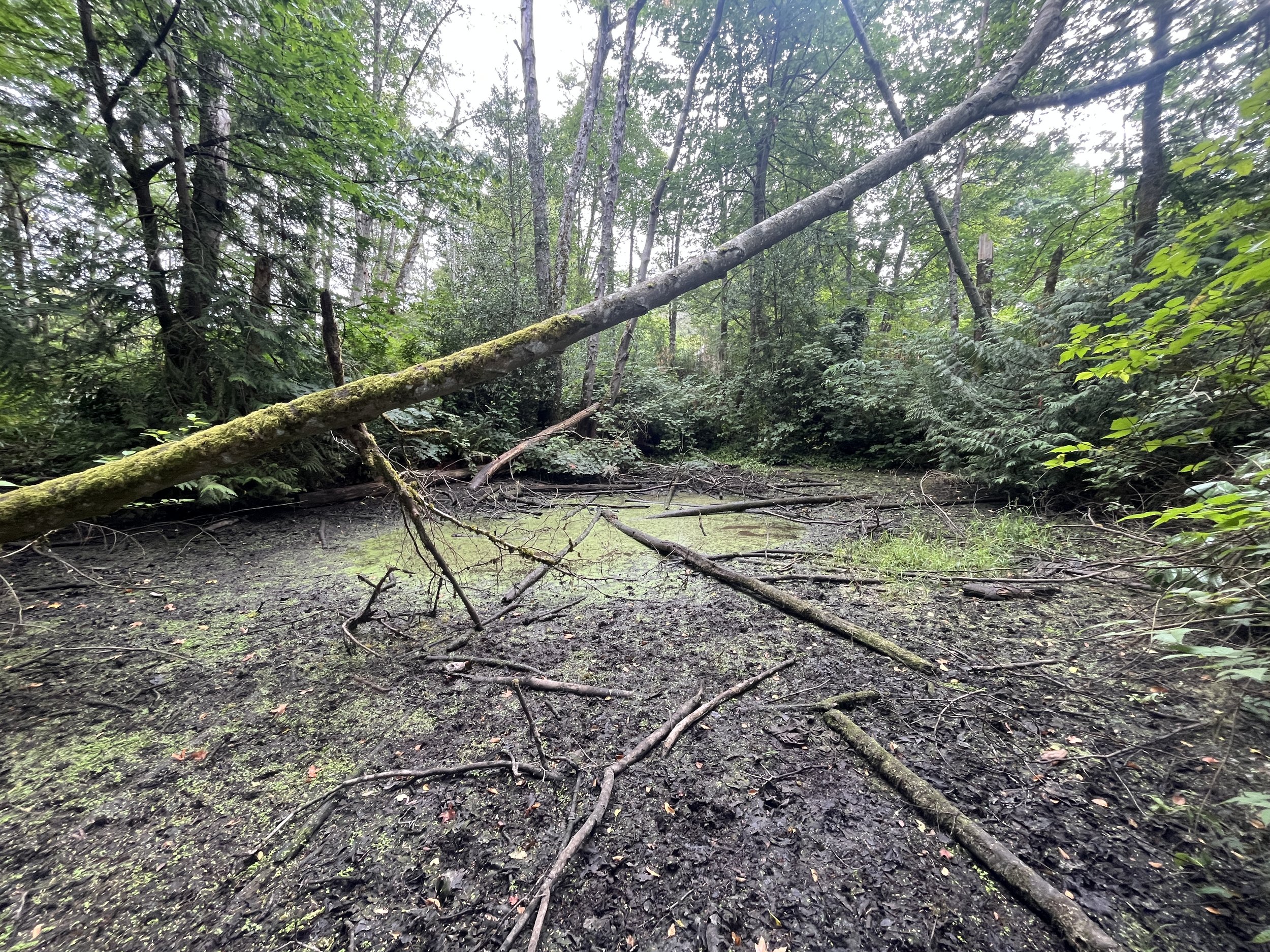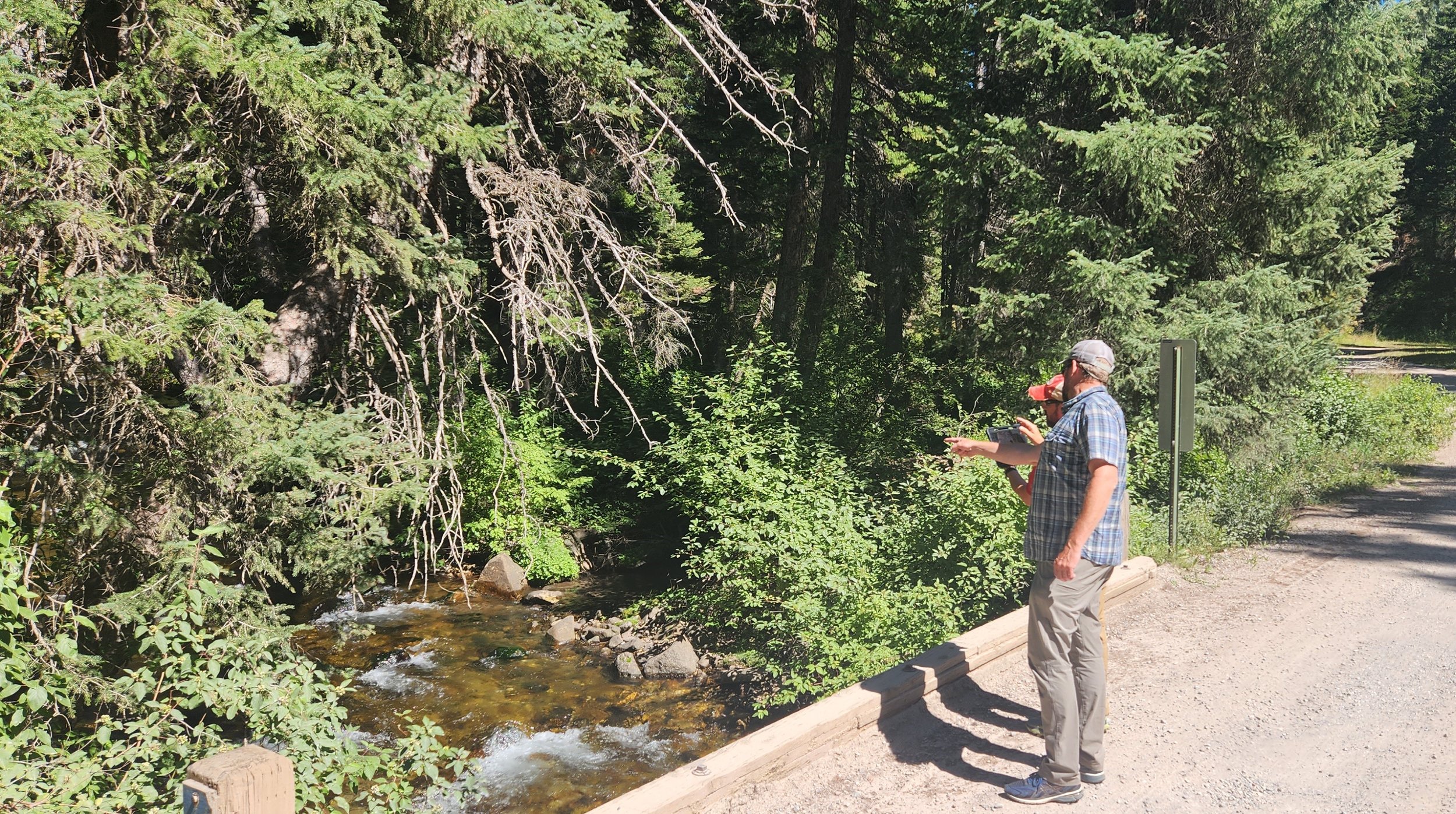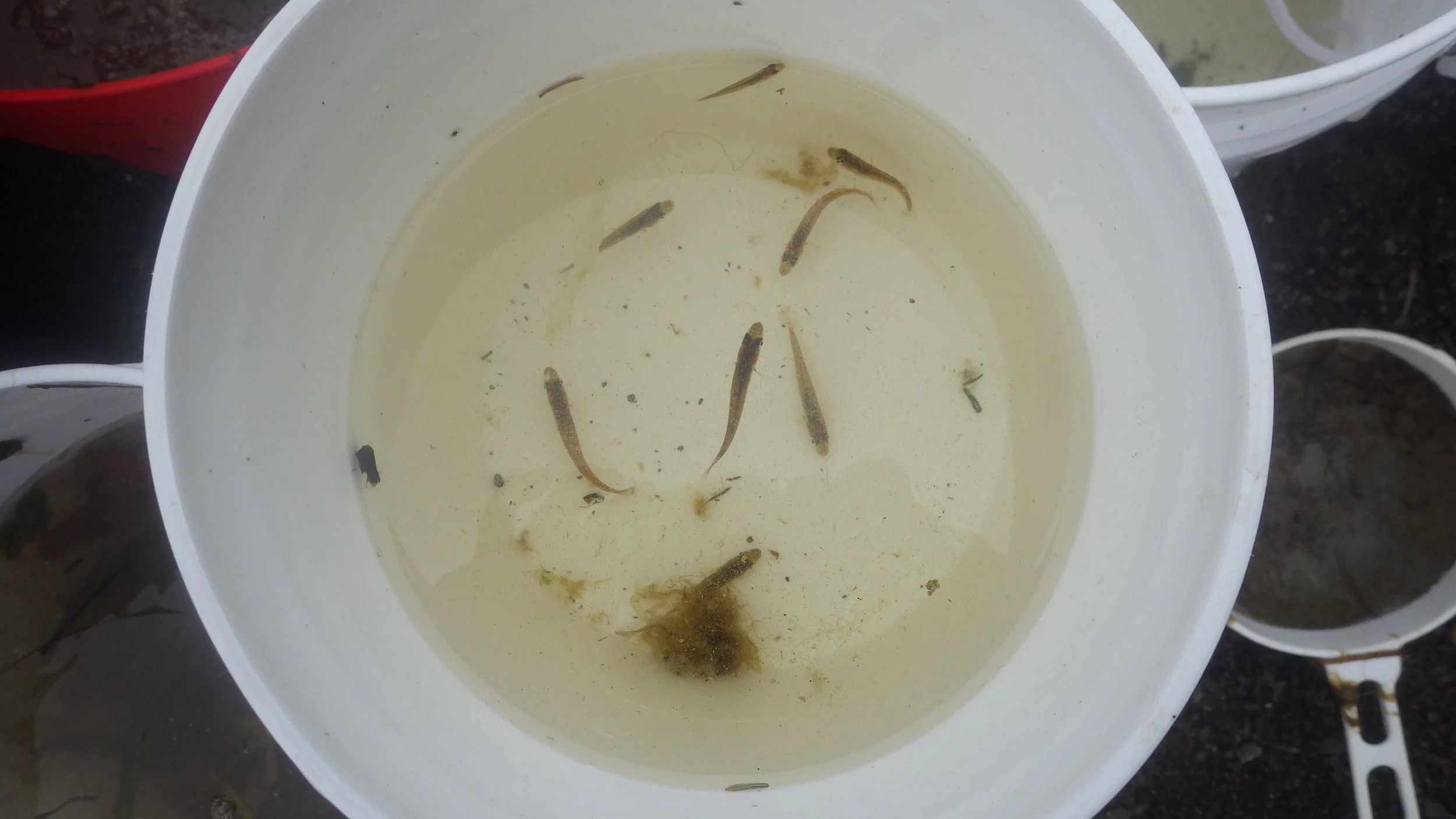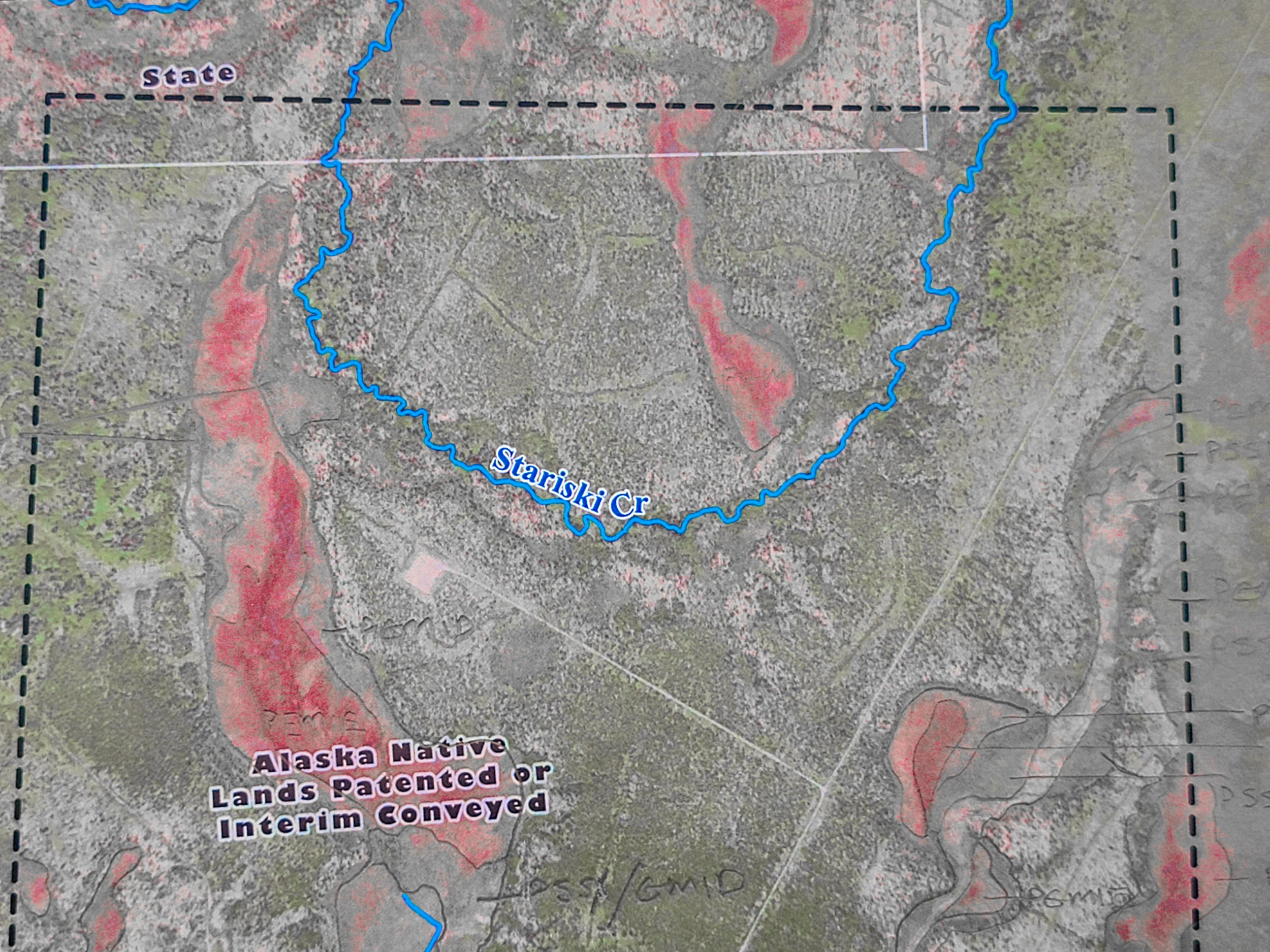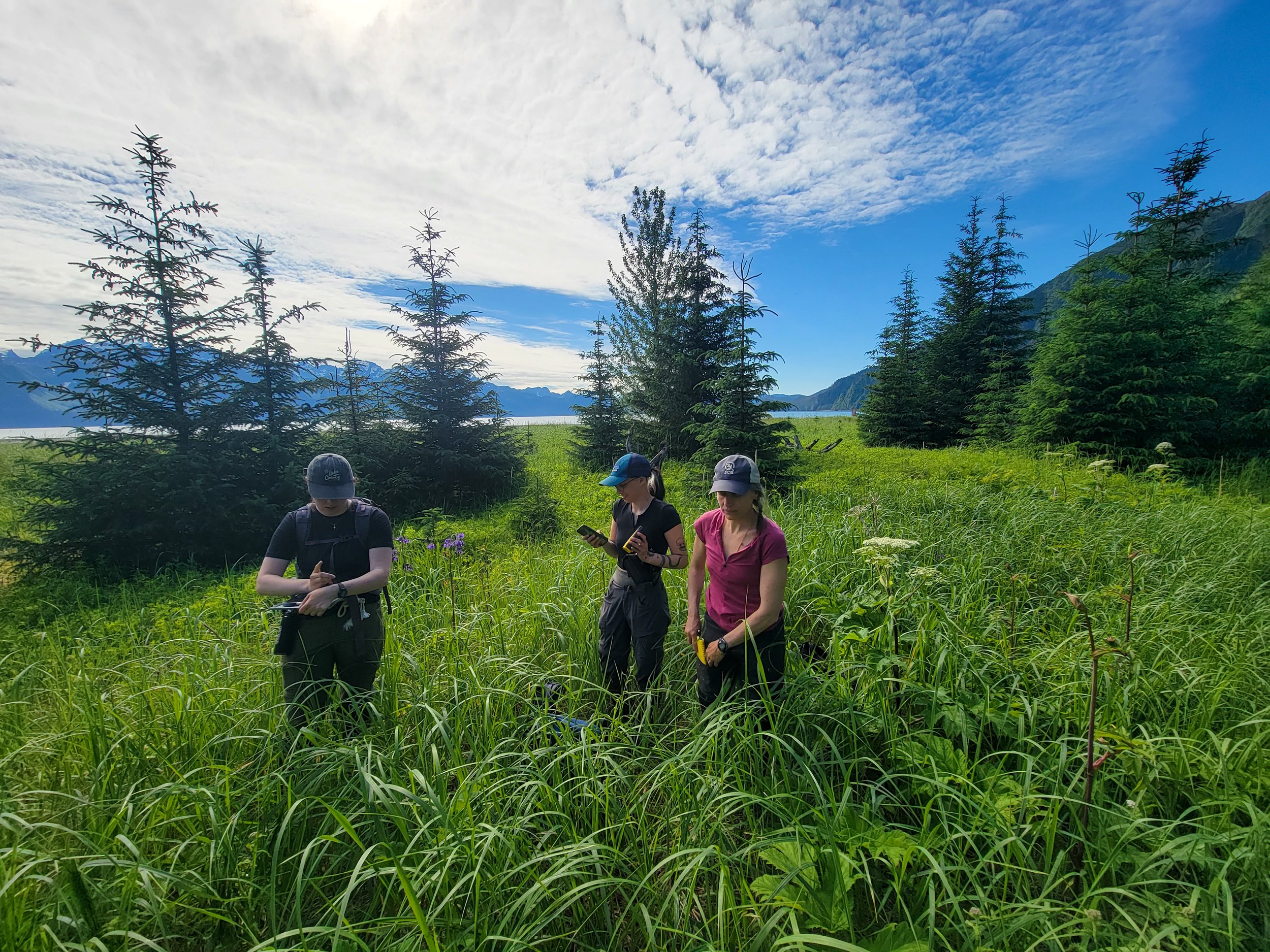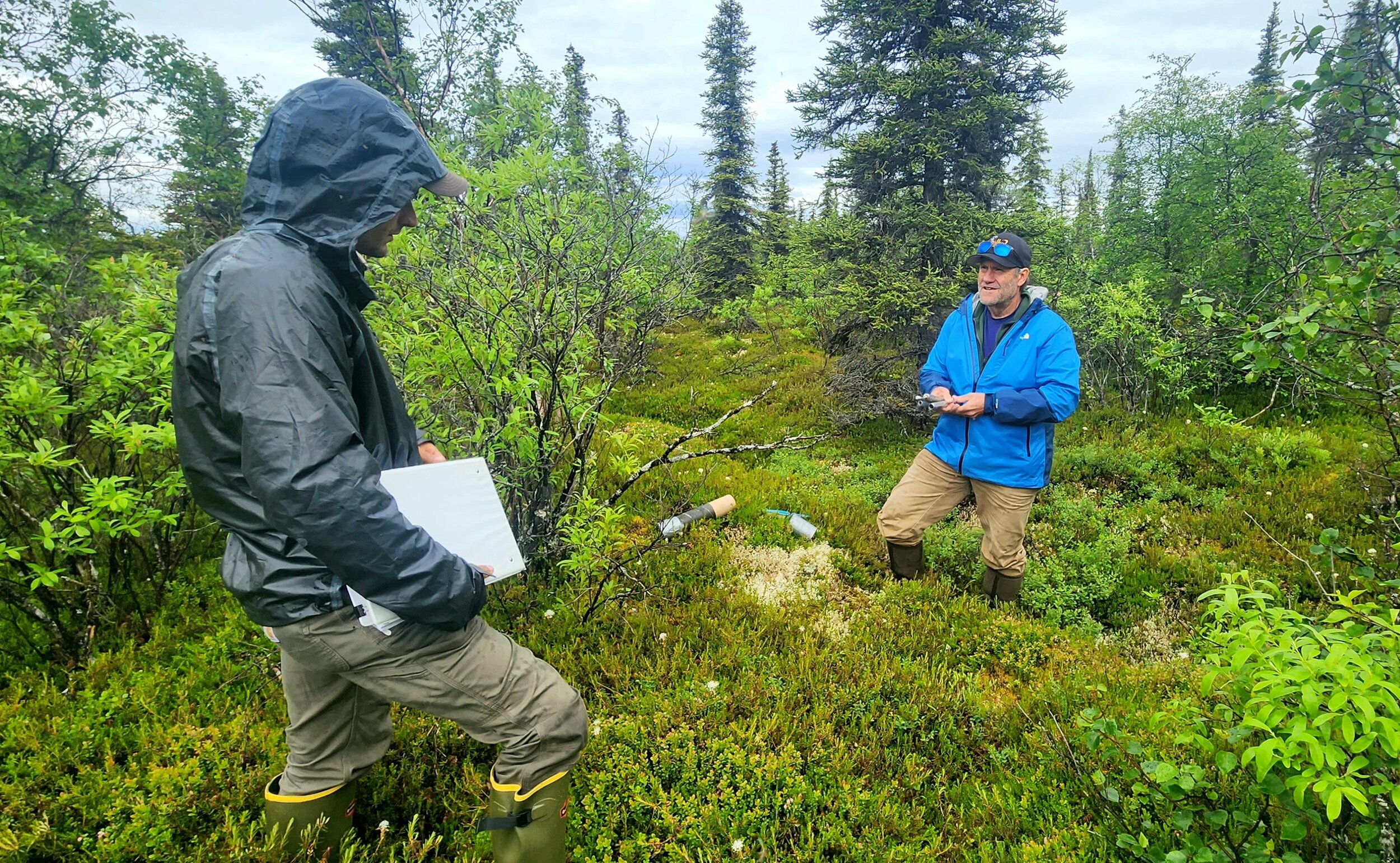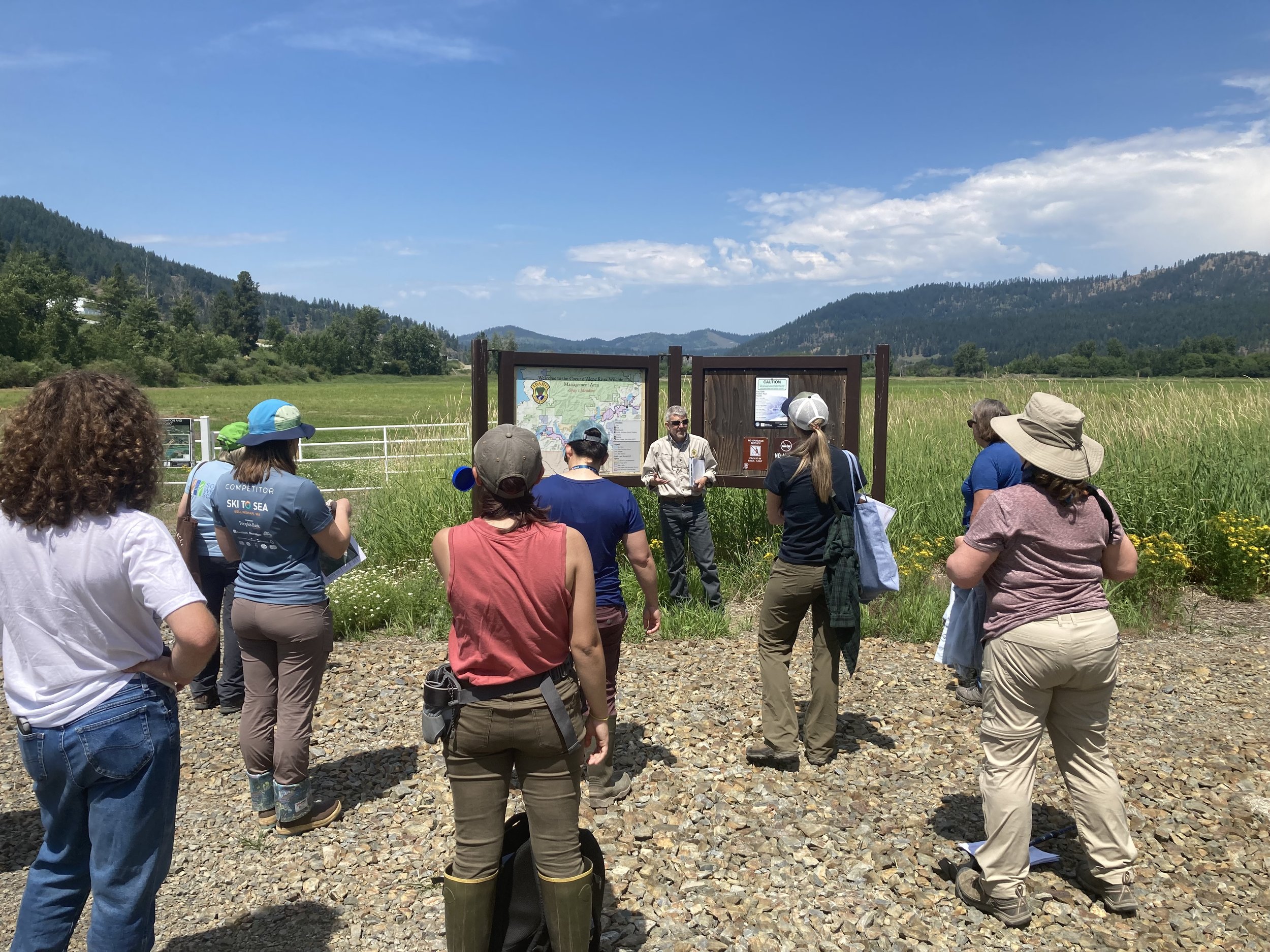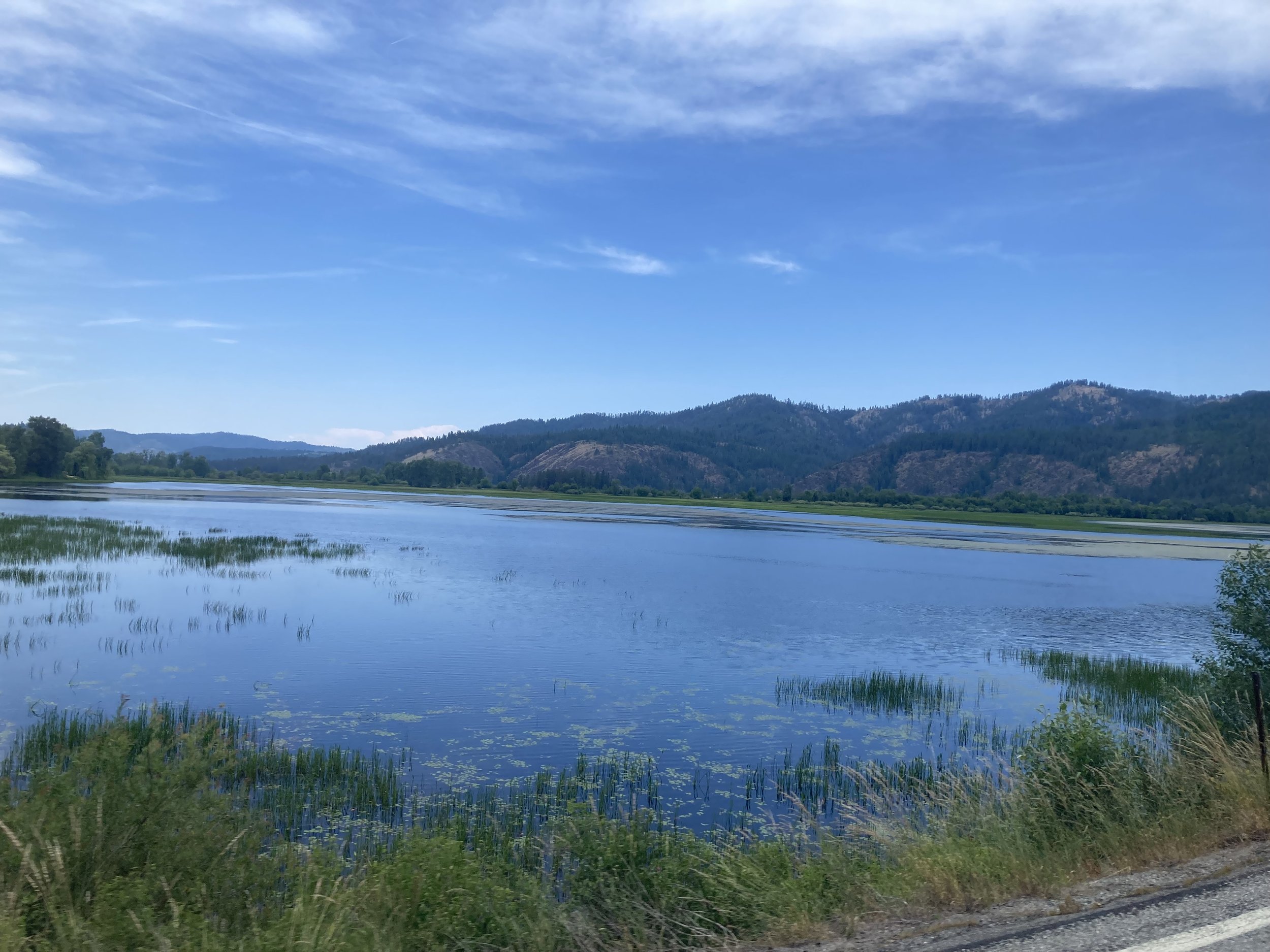
NEWS
Robertson Presents in Alaska
In late October, GSS Executive Director Andy Robertson presented at the 2023 Alaska Geosummit in Anchorage. The summit brought together geospatial professionals to share experiences, provide updates on mapping initiatives, and learn about technology trends that provide innovative solutions for problems with a geographic perspective. Andy’s presentation was titled “Creative Approaches to Funding Alaska Wetland Inventories, Educational Programs, and Stakeholder Training”. GSS has been working with the U.S. Fish and Wildlife Service for over 20 years to help build wetland data and programs with a variety of federal, state and tribal partners in Alaska. Funding for wetland inventory and management can often be challenging to obtain. GSS and its partners have employed a variety of strategies to generate initial and ongoing wetland program funding, which Andy shared with summit attendees. He also focused on the importance of building partnerships with Alaska Native Villages and Corporations in order to support sustainable land management and develop technology skills for tribal youth in isolated communities.
Robertson Attends, Presents at Church Properties Conference
At the end of October, GeoSpatial Services Executive Director Andy Robertson attended the second-ever Church Properties Conference on the campus of the University of Notre Dame in Indiana. The conference explored property-related challenges and opportunities facing Church leaders, including topics such as historic preservation, how to work with real estate partners, and innovative, mission-aligned uses of church property. The conference organizers invited Andy to give a presentation on how GSS’s work intersects with church properties and Catholic social justice. The theme of his talk was how the application of GIS technology can be used to better understand the location and characterization of church properties, and the intersection of those properties with adjacent landowners/land uses to promote environmental and social justice. He used three examples from GSS projects to demonstrate those connections, including the role of Cascade Meadow on the Rochester Campus as a model for education, multiple use, environmental stewardship and climate resilience. According to Andy, “there was a ton of energy and excitement around the opportunities that reimagining church properties represents for Catholic social justice, urban revitalization, housing, parish and diocesan management, investment, capital recovery and environmental stewardship. Over the course of two days, I engaged with numerous clergy from a variety of locations and roles, academics, professional property and real estate managers, investors, capital managers, architects, farmers and laity focused on supporting the underserved.”
A Field Foray to the Pacific Northwest
In mid-August, GSS staff Mike Knudson, Josh Balsiger, and Kevin Stark traveled to King County, Washington (home of Seattle) for a wetland mapping field trip. They visited wetland sites in five different watersheds with staff from the King County and the Washington Ecology Department, including a Senior Ecologist, Wetland Scientist, and Environmental Scientists. The team was also joined by a U.S. Fish and Wildlife Service staff member from the National Wetland Inventory program for 2 days. Memorable moments from the trip included visiting small estuarine wetlands on Vashon Island, pushing through thick blackberry bushes to access potential wetlands, and confirming the existence of very small wetland features identified with the use of LiDAR (elevation data) and skilled image and GIS data interpretation. The team was also surprised to find that many floodplains that appeared to be wetlands according to imagery and GIS data were not wetland because their streams have become so incised that the floodplains have become “disconnected” (i.e., are no longer flooding), primarily due to human activities.
Idaho Explorations Continue
In August, GSS staff Andy Nadeau, Kevin Stark, Eric Lindquist, and Isabelle Gile spent 9 days completing wetland field verification and identification in Idaho. This is the third summer the BLM mapping team has spent in the state, and the team has travelled over 4,000 miles throughout Idaho in that time. The team’s travels this summer took them to the greater Boise area as they investigated the complex canal system of the highly developed urban area. Other areas visited included the Snake River Plains in south central Idaho, and the lava fields associated with Craters of the Moon National Monument. A new area of the state visited this summer was the southeastern corner of Idaho, which contains some of the most unique wetlands in the entire state. GSS staff spent considerable time in the Bear Lake region and investigated the uniquely managed wetlands of that area. The Idaho BLM mapping project contains a small portion of land east of the Idaho border into Wyoming, directly adjacent to Grand Teton National Park. Staff members were able to visit both the east and west side of the Teton Range as they observed the unique topography of the area.
North Dakota Mapping Wraps Up
After 5 years, GSS is finalizing its NWI mapping in the state of North Dakota. The project started in September of 2018 and the final data/reports will be delivered next month. During that time, the GSS team created over 1.7 million polygons covering 3.6 million wetland acres in 37 counties across the state (map below)! The project team, lead by Nick Lemcke for 32 counties and Daren Omoth for the final 5 counties, included 72 members over the 5 years (17 staff and 55 student interns), dedicating more than 64,000 hours to the work. The project also included 5 different fieldwork trips to various parts of the state. Congratulations to the team!
GSS Tech Contributes to Alaska Fish Research
In mid-July, GIS Technician Klaus Friedli assisted in field sampling with GSS partner-organization Alaska BioMap in the northern parts of the Kodiak Archipelago. The sampling will contribute to a study titled: Validating a biophysical individual-based model (IBM) of juvenile Pacific cod settlement, growth, and survival in the Gulf of Alaska. The fieldwork is part of broad-scale sampling across the Gulf of Alaska (GOA) in potential nearshore nursery areas for juvenile Pacific cod to validate early benthic juvenile abundance predictions from the IBM. Biophysical IBMs incorporate input from physical ocean circulation models and models of nutrients, phytoplankton and zooplankton to predict larval transport, growth, and settlement of fish at scales relevant to population-level early life dynamics and recruitment.
Field sampling was conducted using baited cameras and beach seine sets. Pacific cod, Saffron cod, and Pollock cod caught in a beach seine set were collected for measurements and DNA samples. Size and daily ages of field-collected juvenile Pacific cod will be used to evaluate dispersion, migration rates, and growth rates predicted by the IBM from spawning sites to nearshore settlement areas and make recommendations for updates to the model. These models will ultimately be used to relate juvenile Pacific cod abundance and condition to specific habitat features (vegetation, substrate, depth, etc.) to further enhance the IBM and significantly augment Essential Fish Habitat designations.
Field Work with an Alaska Partner
In mid-July, GSS Assistant Director Kevin Stark spent a few days on Alaska’s Kenai Peninsula doing road-based fieldwork with a GSS partner team from the University of Alaska-Anchorage’s Alaska Center for Conservation Science (ACCS). The goal of the trip was to share field methods for an upcoming project on the Lower Cook Inlet, across the Kenai Peninsula, and over to the Prince William Sound. GSS is the lead organization on a Wetland Mapping project for the area and has partnered with ACCS to complete the field studies, which will contribute to the work.
GSS Sends Staff Back to Alaska for Fieldwork
It was another busy summer of ongoing wetland mapping fieldwork in Alaska for GSS! We had a number of staff working in Alaska this July, including a group that spent three weeks in the Bristol Bay region of Southwest Alaska. This year's project area consists of work being completed with partners from the Bristol Bay Native Corporation (BBNC), the National Fish and Wildlife Foundation (NFWF), the U.S. Geological Survey (USGS), and the Bureau of Land Management. Each contract includes a field component for verifying computer-based GIS mapping work, so that wetland data created in the office is compared to actual landscapes, rather than relying solely on the satellite imagery used in the work.
This year’s team was led by Andy Robertson and Eric Lindquist, who spent over 20 days in the vast landscapes of Alaska. The team also included GIS Technicians Ben Moonen and Nicole Murto. The teams worked out of King Salmon, Port Alsworth, and Dillingham respectively. The fieldwork was similar to past years, in that the team completed data collection and data comparisons utilizing helicopters, cameras, soil and vegetation sampling, and more. This work will continue for nearly two more years and will employ numerous staff and students!
GSS Summer Students Head into the Field
On July 20, fifteen GSS student interns and two of our newer GIS technicians spent a day learning what wetland field verification work is like. Led by GSS Analysts Josh Balsiger and Kathy Allen, the group visited three sites: a saturated wetland just outside Winona, a cold-water trout stream at Farmer’s Park near Stockton, and the wetlands of Cascade Meadow on SMUMN’s Rochester campus. Participants had the opportunity to map what they saw on printouts of aerial imagery, discuss wetland classifications, learn about wetland indicator plant species, and look at wetland soils. The students enjoyed getting to know each other and talking about the different projects they’re all working on, and reported that the experience will help them better understand how what they see in their mapping imagery connects to what actually exists on the ground.
Field day participants: Katie Grover and Avrey Simonsen (technicians); Leo Walter, Brian Berthiaume, Jackson Queen, Danielle Ilunga, Sam King, Clare Culver, Morgan Muhlbauer, Fionn O'Duggan, Carter King, Krystal Baptiste, Tristan Ostrem, Sajida Mirzada, Patrick Derleth, Bailey Rheinheimer, and McKenzie Henkelman (SMUMN and WSU students).
GSS Facilitates Sessions at SWS Annual Meeting
During the last week of June, GSS Director Andy Robertson and Natural Resource Analyst Kathy Allen travelled to Spokane, WA, for the Annual Meeting of the Society for Wetland Scientists (SWS). They partnered with the National Association of Wetland Managers (NAWM) to facilitate a symposium titled, “Passing the Torch: Engaging Tribal Communities and Youth in Wetland Conversation through Education and Activity”. Speakers at the symposium included representatives from the Spokane Tribe and Tulalip Tribes, both of Washington, and the Nez Perce Tribe of Idaho. GSS also partnered with NAWM to host a Tribal Roundtable Forum on sustainable wetland program funding for tribes. While in Spokane, Andy and Kathy also met up with other GSS project partners attending the meeting and visited several interesting wetland areas, including the Coeur d’Alene Basin (in northern Idaho), Turnbull National Wildlife Refuge in the Channeled Scablands, and several points on the Spokane River.










